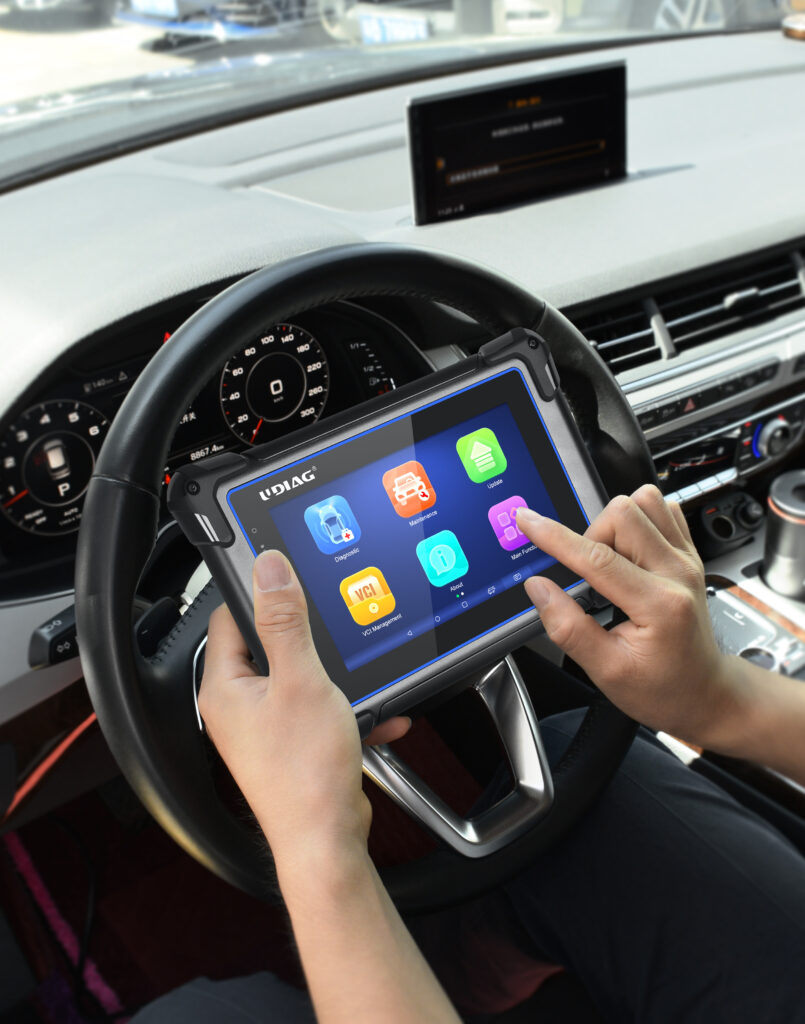Where can I find more information about OBD2 trouble codes?
2024-04-20 by UDIAG
Modern vehicles are equipped with sophisticated onboard diagnostic systems, known as OBD2 (On-Board Diagnostics II), designed to monitor the performance of various vehicle components and systems. One of the key features of OBD2 is its ability to generate trouble codes when it detects a problem. These trouble codes provide valuable insights into the health of a vehicle and can be instrumental in diagnosing and resolving issues efficiently. In this essay, we will explore where to find more information about OBD2 trouble codes, essential for both vehicle owners and automotive enthusiasts.

I. Introduction to OBD2 Trouble Codes
OBD2 trouble codes are standardized codes used to indicate specific issues detected by a vehicle’s diagnostic system. These codes play a crucial role in modern vehicle diagnostics, allowing mechanics and car owners to pinpoint problems quickly and accurately. Each trouble code consists of a series of alphanumeric characters that convey information about the type of issue detected.
II. Understanding OBD2 Trouble Codes
OBD2 trouble codes are categorized into two main types: generic (P0 codes) and manufacturer-specific (P1 codes). Generic codes are common across all vehicle makes and models, while manufacturer-specific codes are unique to particular automotive brands. Each trouble code follows a specific format (e.g., P0123), where each segment provides essential details about the detected problem.
III. Sources for OBD2 Trouble Code Information
There are several reliable sources to obtain detailed information about OBD2 trouble codes:
A. Vehicle Owner’s Manual The vehicle owner’s manual is a primary resource for understanding OBD2 trouble codes. It typically includes a section dedicated to explaining various codes and what they signify. Information on retrieving and interpreting codes using the vehicle’s onboard diagnostics system can also be found here.
B. Online Resources
- Official Manufacturer Websites: Most automotive manufacturers provide online resources, including comprehensive guides and databases for trouble code lookup. These websites offer specific information tailored to their vehicle models.
- Third-Party Automotive Websites: Numerous reputable automotive websites offer detailed explanations of OBD2 trouble codes. These sites often feature articles, tutorials, and forums where users can discuss and learn about diagnostic codes.
C. OBD2 Code Readers and Scanners Investing in an OBD2 code reader or scanner is another effective way to access trouble code information. These devices can retrieve and display codes directly from a vehicle’s diagnostic system, providing real-time data on detected issues.
IV. Using Online Databases and Tools
Utilizing online databases and tools enhances the process of diagnosing and understanding OBD2 trouble codes:
A. OBD2 Code Lookup Databases Websites and mobile apps dedicated to OBD2 code lookup offer comprehensive databases of trouble codes and their meanings. Users can enter specific codes to retrieve detailed information about potential causes and recommended solutions.
B. Smartphone Apps Many smartphone apps are available for OBD2 diagnostics, providing convenient access to trouble code information on the go. These apps often feature additional functionalities such as live data monitoring and maintenance reminders.
C. Community Forums and Discussion Boards Engaging with automotive enthusiasts and professionals through online forums and discussion boards can be invaluable. These platforms facilitate knowledge-sharing, allowing users to seek advice, share experiences, and gain insights into resolving OBD2-related issues.
V. Tips for Interpreting and Resolving OBD2 Trouble Codes
Understanding how to interpret and resolve OBD2 trouble codes effectively is essential:
A. Analyzing OBD2 Codes Take into account the severity of codes (e.g., pending vs. confirmed) and research common reasons associated with specific codes. This helps prioritize troubleshooting efforts.
B. DIY Troubleshooting Steps Perform basic checks and maintenance tasks based on trouble code information. Knowing when to seek professional help is crucial for complex or persistent issues.
Conclusion
In conclusion, acquiring knowledge about OBD2 trouble codes is vital for vehicle maintenance and diagnostics. By leveraging resources such as owner’s manuals, online databases, code readers, and community forums, car owners and enthusiasts can gain valuable insights into understanding and resolving automotive issues effectively. Continuous learning and engagement with the automotive community contribute to enhanced diagnostic capabilities and overall vehicle health management.
FAQs
1. What are OBD2 trouble codes?
OBD2 trouble codes are standardized diagnostic codes used by vehicles equipped with OBD2 systems to indicate specific issues or malfunctions detected within the vehicle’s onboard systems. These codes help in identifying problems and facilitate efficient troubleshooting and repairs.
2. How do I retrieve OBD2 trouble codes from my vehicle?
You can retrieve OBD2 trouble codes using an OBD2 scanner or code reader. Simply connect the scanner to the OBD2 port (usually located under the dashboard), turn on the ignition, and follow the scanner’s prompts to retrieve stored trouble codes.
3. Where can I find information about OBD2 trouble codes specific to my vehicle?
Information about OBD2 trouble codes specific to your vehicle can be found in the vehicle’s owner’s manual. Additionally, you can visit the official website of the vehicle manufacturer or use online resources that offer comprehensive databases of trouble codes.
4. What do OBD2 trouble codes mean?
OBD2 trouble codes consist of alphanumeric characters that convey information about the type and source of a detected problem. Each code corresponds to a specific issue detected by the vehicle’s diagnostic system, such as engine misfire, sensor malfunction, or emission control system fault.
5. How can I interpret OBD2 trouble codes?
You can interpret OBD2 trouble codes by referring to code lookup resources, including owner’s manuals, online databases, and smartphone apps. These resources provide detailed descriptions of trouble codes along with potential causes and recommended diagnostic and repair procedures.


